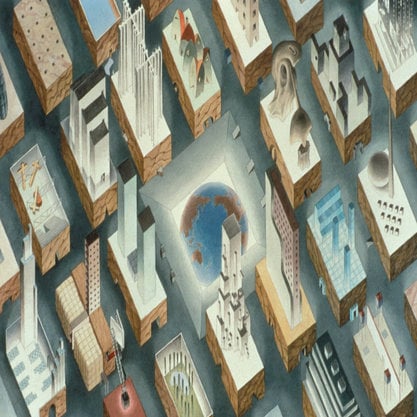Article
Googie Architecture By Bryant-Mole, Bart
Article
Googie architecture was a vernacular style of architecture that emerged in post-Second World War America, primarily in Southern California. Replacing Streamline Moderne as the style of choice for commercial roadside buildings, Googie architecture was characterized by innovative, exuberant designs and attention-grabbing, futuristic forms. Emerging at the peak of America's post-war economic boom, the extravagance of the style symbolized this time of plenty. Though not a cohesive group, certain architects did become associated with Googie architecture. These included Armét and Davis, Douglas Honnold, Martin Stern Jr., and John Lautner.
